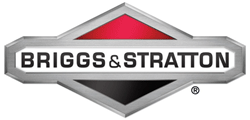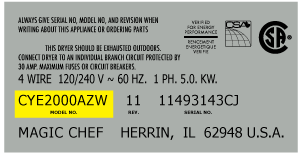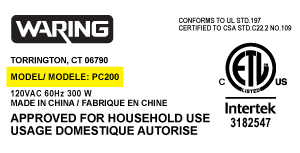11017132700 Kenmore Washer - Instructions
Keep searches simple. Use keywords, e.g. "leaking", "pump", "broken" or "fit".
Direct drive pump was leaking
I watched the video from the web site, decided that pulling the whole case was more work than needed. I tipped the washer back at about 45 degrees so that I could get under it and braced it so that it would not fall back fwd. Put a medium cooking bowl under the pump, used a channel locks to remove the 2 spring clamps that where around the hoses and slide the hoses off and let the water drain into the bowl. Then used a medium straight slot screw driver to release the clips from each side of the pump and slid the pump off the shaft. If you turn the clips 90 degrees they will slip out and had to remove the upper clip to get the pump out. Lined up the pump and the shaft making sure that the flat side of shaft and pump lined up and slid it on. Reinstalled the pump clips and slid the hoses back on the pump slide the clamps back in place lowered the washer and test ran it for leaks. Great Job NO leaks. Whole job took me less than 30 minutes.
Parts Used:
-
Philip from DENTON, TX
-
Difficulty Level:Easy
-
Total Repair Time:15 - 30 mins
-
Tools:Pliers, Screw drivers
6 of 6 people
found this instruction helpful.
Was this instruction helpful to you?
Thank you for voting!
The middle tub would not come out
Sprayed wd40 - limescale - boiling water , NOTHING WORKED after half an hour reapeted spraying and pulling the tub and shaking it back and forth - still nothing
Finally I replaced the center nut loosely than putting a piece of wood on top of it and with me holding the tub slightly high - my wife than whacked it hard several times , I also was turning the tub every whack
When it came out it was full of rust and grime - it would have never come out without what we did
Replacing the the rubber washer was easy - machine works and no more leaking- thank you for your video which really helped to start the job
Finally I replaced the center nut loosely than putting a piece of wood on top of it and with me holding the tub slightly high - my wife than whacked it hard several times , I also was turning the tub every whack
When it came out it was full of rust and grime - it would have never come out without what we did
Replacing the the rubber washer was easy - machine works and no more leaking- thank you for your video which really helped to start the job
Parts Used:
-
Jayanti from SNELLVILLE, GA
-
Difficulty Level:Very Difficult
-
Total Repair Time:More than 2 hours
-
Tools:Nutdriver, Pliers, Screw drivers, Socket set, Wrench (Adjustable), Wrench set
7 of 9 people
found this instruction helpful.
Was this instruction helpful to you?
Thank you for voting!
Water level selector inoperable, washer stuck in "Med" load.
Using the guidance listed on your website for part #PS3408149, Water Level Pressure Switch, I removed two screws on each side of the rear Control Panel, removed the dial from the front, lifted the panel on the right side from rear, removed the hose and the electrical plug, twisted off the broken part and installed the new one in absolute reverse! Reassembled panel, plugged in unit to electric and performed function check to great satisfaction! (by doing one med load and one super load over next 2 hours)
Parts Used:
-
Anthony from MIDDLETOWN, NY
-
Difficulty Level:Really Easy
-
Total Repair Time:15 - 30 mins
-
Tools:Screw drivers
6 of 6 people
found this instruction helpful.
Was this instruction helpful to you?
Thank you for voting!
Washer not completing rinse cycle. Broken centrifugal switch
I disconnect power from wall outlets. Turn off pipes and remove water hoses from machine. Clear machine making room to operate.
I removed two Phillip head screws from behind the console, press down lightly on console then flipped it back. Disconnect the lid switch by releasing the plastic clip. Used a screwdriver to release the 2 metal holding clips (one on each side on top of machine. Ease the case up slightly then pull back gaining access to the centrifugal switch which is mounted to the motor with one Phillip head screw. One end of switch was broken and disconnected. Motor was not keeping up. Discharged capacitor by grounding the terminals with an insulated plyers. Lift the clip on the broken switch then pull the connector off. With new switch in hand, remove each of the 5 wires from the old switch by using a needle nose pliers one by one and connect them to the new switch making sure each one is properly secured in please. Connect the new switch to the motor using the single screw. Secure the connector to switch. Replace case by tilting back about 45 degrees, slide under front frame of machine all the way then down inplace. Use the two metal clips to secure frame to rear panel. Reconnect lid switch. Return machine to usual spot, reconnect water hoses, turn pipes on make sure there are no leaks. Plug back into wall outlet. Washer was tried and all cycles were completed.
I removed two Phillip head screws from behind the console, press down lightly on console then flipped it back. Disconnect the lid switch by releasing the plastic clip. Used a screwdriver to release the 2 metal holding clips (one on each side on top of machine. Ease the case up slightly then pull back gaining access to the centrifugal switch which is mounted to the motor with one Phillip head screw. One end of switch was broken and disconnected. Motor was not keeping up. Discharged capacitor by grounding the terminals with an insulated plyers. Lift the clip on the broken switch then pull the connector off. With new switch in hand, remove each of the 5 wires from the old switch by using a needle nose pliers one by one and connect them to the new switch making sure each one is properly secured in please. Connect the new switch to the motor using the single screw. Secure the connector to switch. Replace case by tilting back about 45 degrees, slide under front frame of machine all the way then down inplace. Use the two metal clips to secure frame to rear panel. Reconnect lid switch. Return machine to usual spot, reconnect water hoses, turn pipes on make sure there are no leaks. Plug back into wall outlet. Washer was tried and all cycles were completed.
Parts Used:
-
Rudolph from LAUDERHILL, FL
-
Difficulty Level:Easy
-
Total Repair Time:15 - 30 mins
-
Tools:Pliers, Screw drivers
6 of 6 people
found this instruction helpful.
Was this instruction helpful to you?
Thank you for voting!
washer would not agitate when lid was closed
The only tricky part was figuring out how to get to the part. There were only two screws that seemed likely candidates to pop off the control panel (on the back at the corners). Fortunately for me the obvious answer was the right one...the panel lifted up and the new part went in - very easy.
Parts Used:
-
Timothy from Saint Louis, MO
-
Difficulty Level:Easy
-
Total Repair Time:Less than 15 mins
-
Tools:Screw drivers, Wrench (Adjustable)
7 of 9 people
found this instruction helpful.
Was this instruction helpful to you?
Thank you for voting!
washer wouldn't go into spin cycle
After reading other repair stories I did it like they said. I disconnected all the hoses and drained as much water as I could. The top came apart easily with a regular screwdriver, a 1/2 in drive with extension, and a 14 or 15mm deep socket. The spanner nut came off easiest with several short, quick blows (punch and hammer, counterclockwise). In my case a good wack seemed to be soaked up by the wash tub springs. Be careful not to chip the tub.
I laid the washer, front down, onto a couple a 2x6's. I supported between the tub and body with small 2x4 scraps. The motor/trans/pump came off easily after disconnection the 2 hoses (towels handy) and wiring. After the 3 screws, and some wiggling, the assembly slid out nicely. The coupler came out after snapping the springs off to remove the pump and motor. A 1/4 nut driver and regular screwdriver assisted. Watch how the pump comes off. You might want to mark its orientation with a marker or something. Make sure you get the new coupler on all the way with some taps on the CENTER where the shaft is. Reassemble in the reverse order. You'll know why I suggested marking the water pump.
Watch the order/orientation of the springs, clips, and washer. The clips came off with a screwdriver and pliers. It's always nice to have a rag on them when removing, they like to shoot off and land in the spot that's hardest to find, like under the dryer. My clutch was assembled with the right spring and slid right on. Don't forget about the plastic washer, snap it in good. The plastic piece still on the washer was simple. I opened up a nose pliers and put it on each side of the clip then gave it a hit. It came off with minimal effort and didn't spin on the shaft like pushing on one side with a screwdriver.
During reassembly I put a very light film of grease on the shaft. That washer with the tabs gave me trouble at first. I put a good film of grease on the side with the tabs to hold it in place, with the tabs down, in the clip. Otherwise when sliding the assembly back together it comes loose and you won't get the motor/trans all the way in. Then it all has to come back out and you'll wonder what the heck is keeping the transmission from seating in all the way. You might even get it all together, figuring the motor or tub has to turn to get it to seat right. You may even try running a no clothes load and get stuck with a tub full of water. Ask me how I know.
Reverse everything to reassemble. Make sure you get the springs tight that hold the hoses on. I was worried about over tightening the plastic nut with a 1/2 drive. Run no-clothes load, large, hot with soap. I think tipping it over loosened some stuff that was stuck in between the tub and basket. No, it wasn't grease from the shaft, light film. Anyway, I'll waste a washer full of hot soapy water to avoid the, "Um..what's this on my new shirt".
I didn't mean for this to be so long winded, but I was leary about tackling this job at first. I know my way around the garage/cars, but never tried appliances before. I pictured it'd be apart for weeks and I'd have to call a repair man. Then the "I told you so" look would come. You all know what I mean. I just want to cover as much as possible and encourage others while having them avoid any troubles.
I laid the washer, front down, onto a couple a 2x6's. I supported between the tub and body with small 2x4 scraps. The motor/trans/pump came off easily after disconnection the 2 hoses (towels handy) and wiring. After the 3 screws, and some wiggling, the assembly slid out nicely. The coupler came out after snapping the springs off to remove the pump and motor. A 1/4 nut driver and regular screwdriver assisted. Watch how the pump comes off. You might want to mark its orientation with a marker or something. Make sure you get the new coupler on all the way with some taps on the CENTER where the shaft is. Reassemble in the reverse order. You'll know why I suggested marking the water pump.
Watch the order/orientation of the springs, clips, and washer. The clips came off with a screwdriver and pliers. It's always nice to have a rag on them when removing, they like to shoot off and land in the spot that's hardest to find, like under the dryer. My clutch was assembled with the right spring and slid right on. Don't forget about the plastic washer, snap it in good. The plastic piece still on the washer was simple. I opened up a nose pliers and put it on each side of the clip then gave it a hit. It came off with minimal effort and didn't spin on the shaft like pushing on one side with a screwdriver.
During reassembly I put a very light film of grease on the shaft. That washer with the tabs gave me trouble at first. I put a good film of grease on the side with the tabs to hold it in place, with the tabs down, in the clip. Otherwise when sliding the assembly back together it comes loose and you won't get the motor/trans all the way in. Then it all has to come back out and you'll wonder what the heck is keeping the transmission from seating in all the way. You might even get it all together, figuring the motor or tub has to turn to get it to seat right. You may even try running a no clothes load and get stuck with a tub full of water. Ask me how I know.
Reverse everything to reassemble. Make sure you get the springs tight that hold the hoses on. I was worried about over tightening the plastic nut with a 1/2 drive. Run no-clothes load, large, hot with soap. I think tipping it over loosened some stuff that was stuck in between the tub and basket. No, it wasn't grease from the shaft, light film. Anyway, I'll waste a washer full of hot soapy water to avoid the, "Um..what's this on my new shirt".
I didn't mean for this to be so long winded, but I was leary about tackling this job at first. I know my way around the garage/cars, but never tried appliances before. I pictured it'd be apart for weeks and I'd have to call a repair man. Then the "I told you so" look would come. You all know what I mean. I just want to cover as much as possible and encourage others while having them avoid any troubles.
Parts Used:
-
Jesse from Lester Prairie, MN
-
Difficulty Level:Easy
-
Total Repair Time:30 - 60 mins
-
Tools:Pliers, Screw drivers, Socket set, Wrench set
8 of 13 people
found this instruction helpful.
Was this instruction helpful to you?
Thank you for voting!
Leaking water from bottom after wash
Turn washer on its side unscrewed clamps used pliers to slide clamps off of two hoses connected to pump then took clips off that hold pump replaced with new pump and put new clips connected hoses and clamps on new pump turned it back upright job finished
Parts Used:
-
Robert from Wildomar, CA
-
Difficulty Level:Easy
-
Total Repair Time:30 - 60 mins
6 of 7 people
found this instruction helpful.
Was this instruction helpful to you?
Thank you for voting!
tub would not spin....burning smell
Unplugged washer. Pulled the washer away from the wall & leaned it back against the wall to access the underneath side of the washer. Disconnected water hoses to the pump with water pump pliers. Have drain pan handy to catch the water, approximately 1 qt. Remember which hose goes to the proper place. Removed two retaining screws/straps allowing the motor to be seperated from the transmission. There is enough slack in the wiring to allow you to drop the motor without disconnecting. You do not need to remove the water pump. Removed old coupling & replaced with the new one. Make sure you use the "new style" replacement coupler or you will be doing this repair again very soon! Schematics are available online.
Parts Used:
-
John from Elm Mott, AL
-
Difficulty Level:Easy
-
Total Repair Time:Less than 15 mins
-
Tools:Nutdriver, Pliers
6 of 8 people
found this instruction helpful.
Was this instruction helpful to you?
Thank you for voting!
Coupling on Whirlpool Washer gave out
The coupling, made of plastic and rubber, on our Whirlpool washer gave out. Done the same repair nine years ago and knew what to do. Here is a short summery:
1. unscrew the 2 screws that hold the control panel on top of the machine in place
2. unscrew the screws that connect the housing with the back panel
3. pop the 2 clips under the control panel to release the back panel
4. with the back panel loose disconnect everything
that is pushed, screwed or clamped on and take the back panel off (don't worry about remembering where things go, everything can go only one way together again)
5. slightly lift the housing of the washer in the back to remove, that gives you access to the coupling in front of the machine
6. I personally like to put the washer on its back and do the repair that way. However, if you want to
leave it standing that is gets you there too.
7. take the screws out of the brackets that hold the pump (the thing with the two hoses attached to it)
in place and snap off the brackets; lift up the pump and put aside
8. you can now remove the broken coupling
9. check for any fragments and clean off what needs to be cleaned
10. replace the coupling
11. reverse the order of steps 1 to 7; make sure that the all electrical connections and hoses are connected!
12. test
1. unscrew the 2 screws that hold the control panel on top of the machine in place
2. unscrew the screws that connect the housing with the back panel
3. pop the 2 clips under the control panel to release the back panel
4. with the back panel loose disconnect everything
that is pushed, screwed or clamped on and take the back panel off (don't worry about remembering where things go, everything can go only one way together again)
5. slightly lift the housing of the washer in the back to remove, that gives you access to the coupling in front of the machine
6. I personally like to put the washer on its back and do the repair that way. However, if you want to
leave it standing that is gets you there too.
7. take the screws out of the brackets that hold the pump (the thing with the two hoses attached to it)
in place and snap off the brackets; lift up the pump and put aside
8. you can now remove the broken coupling
9. check for any fragments and clean off what needs to be cleaned
10. replace the coupling
11. reverse the order of steps 1 to 7; make sure that the all electrical connections and hoses are connected!
12. test
Parts Used:
-
Ronny from Santa Monica, CA
-
Difficulty Level:Easy
-
Total Repair Time:30 - 60 mins
-
Tools:Screw drivers, Socket set, Wrench set
5 of 5 people
found this instruction helpful.
Was this instruction helpful to you?
Thank you for voting!
The main knob insert snapped.
Nothing to it. Just remember to put the insert in the knob, NOT on the selector stem. Line up the flat part of the insert with the flat part of the stem and push the knob in place.
Don NOT ram it on the selector stem. When it's seated, don't push any more. That's all there is to it. It works. If the pointer on the knob indicates the selector is lined up correctly, but it isn't, the problem is the selector, not the knob.
Don NOT ram it on the selector stem. When it's seated, don't push any more. That's all there is to it. It works. If the pointer on the knob indicates the selector is lined up correctly, but it isn't, the problem is the selector, not the knob.
Parts Used:
-
Larry from HICKORY, NC
-
Difficulty Level:Very Easy
-
Total Repair Time:Less than 15 mins
7 of 11 people
found this instruction helpful.
Was this instruction helpful to you?
Thank you for voting!
washer motor burned out
1. Watch a video on installation, there are many on the internet.
(unplug the washer)
2. remove the screws on the back of the control panel to lift the control panel out of the way.
3. use a flat head screwdriver to remove the clips that hold the cabinet to the back panel.
4. disconnect the lid switch from the control panel by removing the clip that connects them at the top of the cabinet.
5. tilt the cabinet forward to remove it.
6. use a flat head screw driver to remove the two clips that hold the water pump to the motor and swing the water pump out of the way.
7. use a nut driver to remove the shipping screw that holds the clips on to the motor.
8. disconnect the wiring harness from the motor
9. remove the two clips from the motor with a flat head screwdriver and remove the motor
remove the three prong coupler and rubber gasket from the old motor and put them on the shaft of the new motor
10. remove the 4 rubber pads from the old motor and slide them onto the new motor.
11. insert the new motor into the washer aligning the prongs of the coupler.
12 reassemble the washer in reverse order of disassembly
(the shipping screw does not need to be reinserted into the spring clip that holds the motor)
(unplug the washer)
2. remove the screws on the back of the control panel to lift the control panel out of the way.
3. use a flat head screwdriver to remove the clips that hold the cabinet to the back panel.
4. disconnect the lid switch from the control panel by removing the clip that connects them at the top of the cabinet.
5. tilt the cabinet forward to remove it.
6. use a flat head screw driver to remove the two clips that hold the water pump to the motor and swing the water pump out of the way.
7. use a nut driver to remove the shipping screw that holds the clips on to the motor.
8. disconnect the wiring harness from the motor
9. remove the two clips from the motor with a flat head screwdriver and remove the motor
remove the three prong coupler and rubber gasket from the old motor and put them on the shaft of the new motor
10. remove the 4 rubber pads from the old motor and slide them onto the new motor.
11. insert the new motor into the washer aligning the prongs of the coupler.
12 reassemble the washer in reverse order of disassembly
(the shipping screw does not need to be reinserted into the spring clip that holds the motor)
Parts Used:
-
Joseph from SANFORD, NC
-
Difficulty Level:Really Easy
-
Total Repair Time:30 - 60 mins
-
Tools:Nutdriver, Screw drivers
6 of 8 people
found this instruction helpful.
Was this instruction helpful to you?
Thank you for voting!
counter balance spring
first remove your washer cabinet from unit. Next on your back left bottom is where your new spring goes. In my case my spring was broke making the washer spin out of balance. Repair with your new spring, and install cabinet back place plug it in and wash a load of cloths. Wow what a difference!!!! job took about 20 minutes. Very Happy
Parts Used:
-
douglas from Angleton, TX
-
Difficulty Level:Really Easy
-
Total Repair Time:30 - 60 mins
6 of 8 people
found this instruction helpful.
Was this instruction helpful to you?
Thank you for voting!
Loud Screeching noise when draining water
On this model, no need to tip washer on back. Tilt console back and disconnect lid switch. Remove two clips holding back to top of washer (under console). Then remove top and front as directed in the video. The pump is accessible from the front of the unit, just below the tub. Hose clamps are easy to remove/replace. Took more time to wipe inside of washer clean than to remove/replace the water pump. Total time was just over 30 minutes.
Parts Used:
-
Steven from Port Saint Lucie, FL
-
Difficulty Level:Easy
-
Total Repair Time:15 - 30 mins
-
Tools:Pliers, Screw drivers
5 of 5 people
found this instruction helpful.
Was this instruction helpful to you?
Thank you for voting!
slow or no spin
First read up on what others did and tried to find free repair manual with little luck. Called repairman, they thought whole transmission was shot- would have been $70 just to have them look- forget it. Getting it apart: popped off the two console cosmetic panels to get to a screw on each side from the top. Lifted off console, levered and squeezed retaining clips. Unhooked two connectors and overflow tubing? Shell pulled off easily, getting back on after I was all done made me wonder if it was a good choice. In the end yes- allowed me to clean inside surfaces of both tubs to remove grime and rust. There are many stories on the actual clutch replacement, so won't go into too much detail but some lessons learned. Keep track of the way all the plastic aggitator pieces go in, plus the washers and clips along the way. Deep well 1/2" I think socket for the tub, it's litely spring loaded so look before you set it down. Punching off the nut on the tub worried me, but it was no big deal. Loosens and tightens the normal directions, no positive tight stop, just compression so pay attention to how tight and hard you pounded to get it off. Drain the water from the inner tub before getting too far. I took the four springs off and removed both tubs to clean. No more complaining about brown spots on clothes. Get the whole clutch kit, not just the band, even though it's probably just the band worn out. The plastic clutch engaging piece will probably be fatigued. The motor etc is heavy, and buffered it's drop with rags. tip on side when putting it back, because its a bear to try to lift up. I lightly greased some moving parts, just not much as to not cause band grip problems. The wire retaining clip is tricky- I put the hook end in first, used pliers to try and compress, and screwdriver to push down and in. The whole things wants to spin while you do this, but when it finally goes, it stays. I was concerned about the location of the band spring in relation to it's actuator when putting it together, but it turned out if you put it anywhere where the clutch is free to spin, it will engage normally. The top lid has two rubber bumpers, one fell off and landed on the front bottom corner of the cover which didn't help reinstallaion until my 8year old noticed it! Took a number of tries but finally got the four guides from the frame into the cover. I tried bringing it in level, front tipped sligthly up, front tipped slightly down; in the end I won't be much help, it just finally went. It wasn't as easy as most people said it would be, but my back hurt and I had kids "help", and it took just under two hours. Works amazingly well now. Parts arrived Two days after ordering, with no expiditing!
Parts Used:
-
Steven from Wausau, WI
-
Difficulty Level:A Bit Difficult
-
Total Repair Time:1- 2 hours
-
Tools:Pliers, Screw drivers, Socket set
6 of 9 people
found this instruction helpful.
Was this instruction helpful to you?
Thank you for voting!
drum SLAMMING into the back of the washer when sipnning
I just replaced the spring just like the vid show me.it run's like a new one-I bought it used about 5 yr's ago
Parts Used:
-
WILLIAM from DAYTON, KY
-
Difficulty Level:Really Easy
-
Total Repair Time:15 - 30 mins
-
Tools:Screw drivers, Socket set
5 of 6 people
found this instruction helpful.
Was this instruction helpful to you?
Thank you for voting!





































